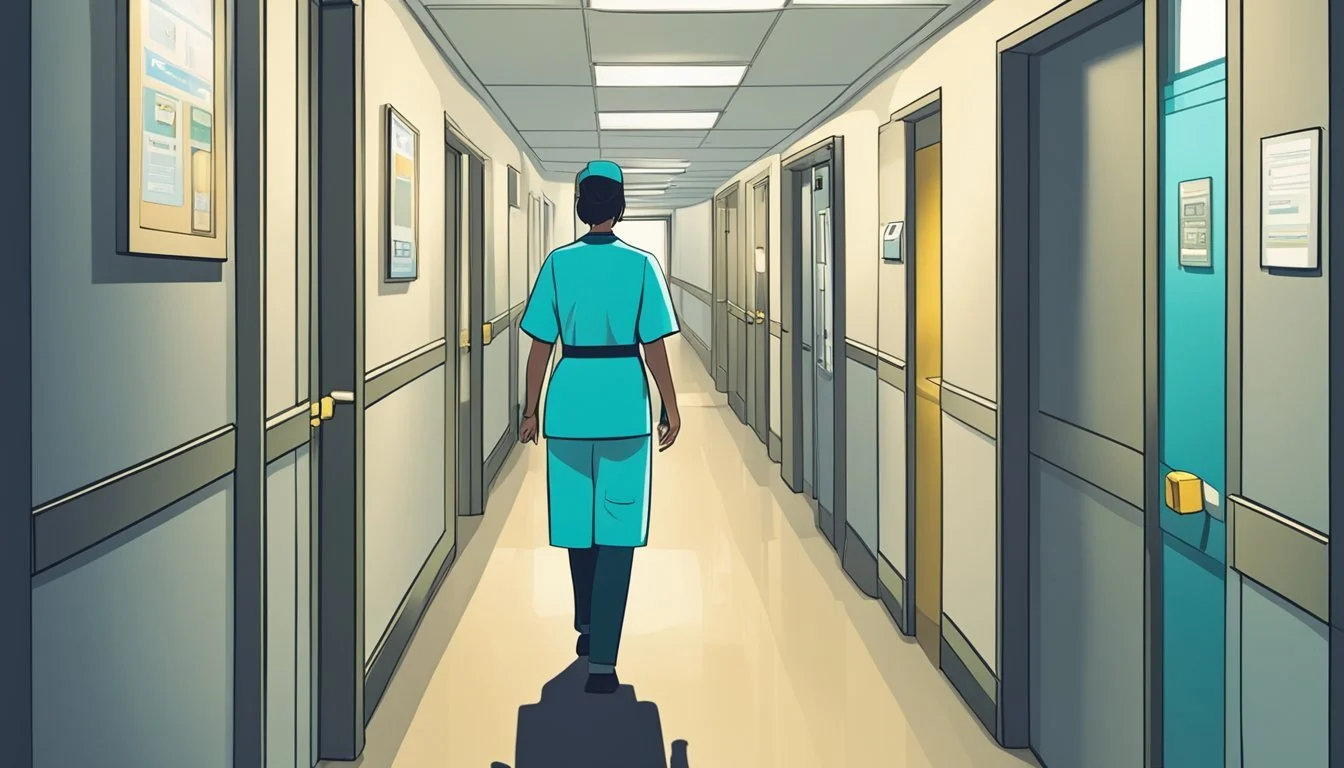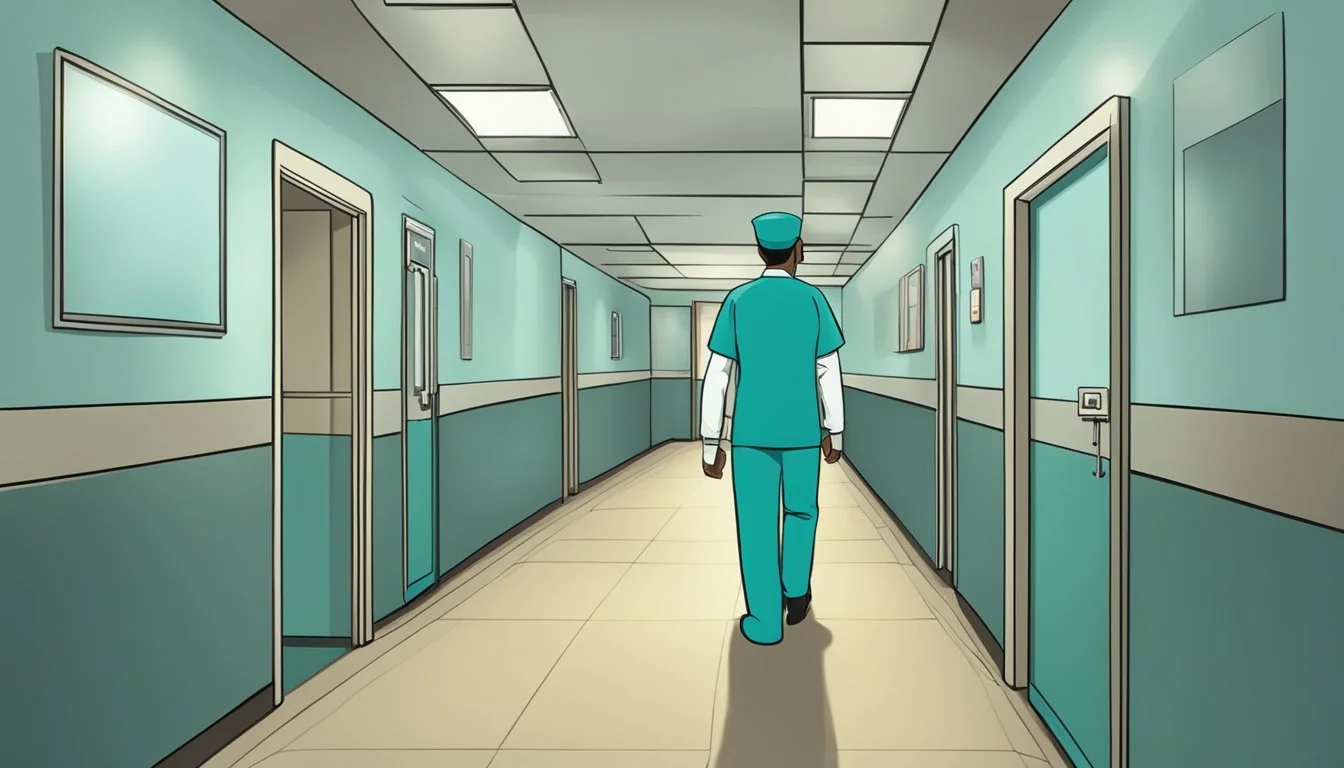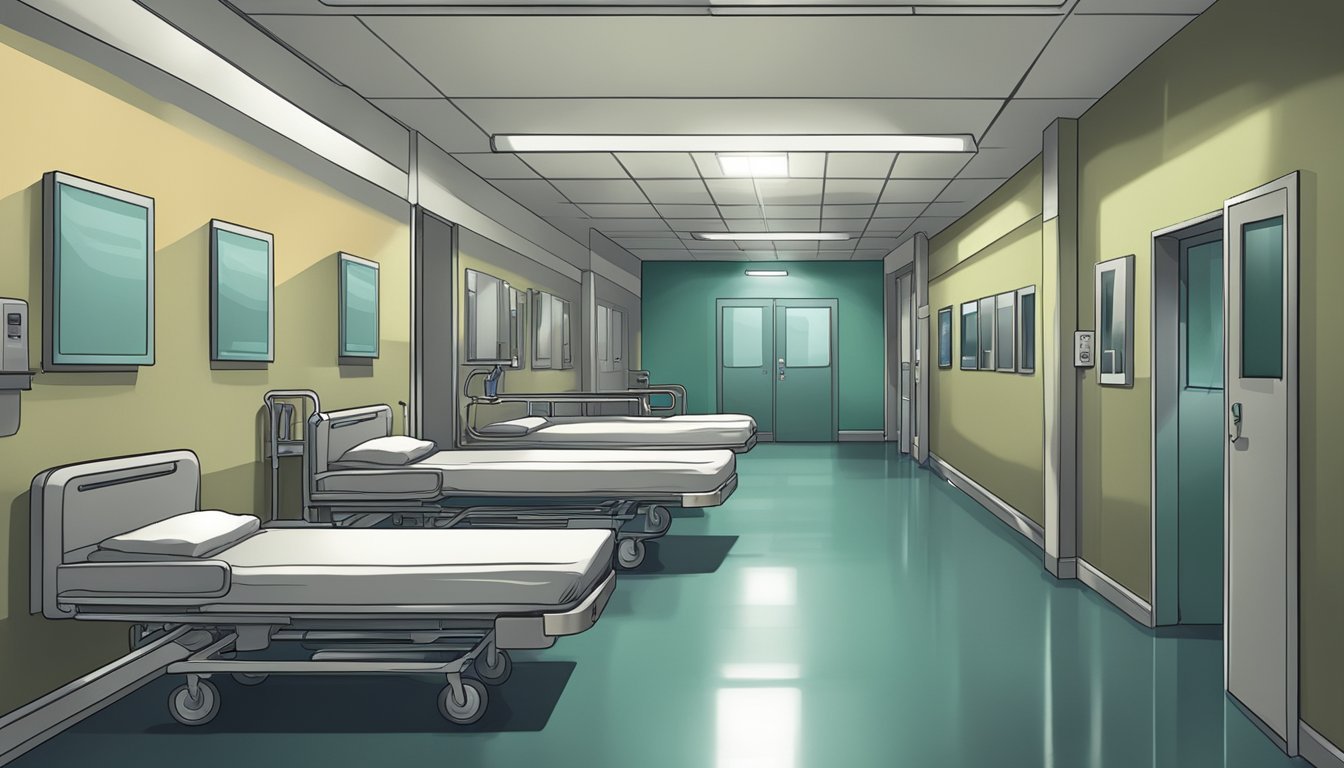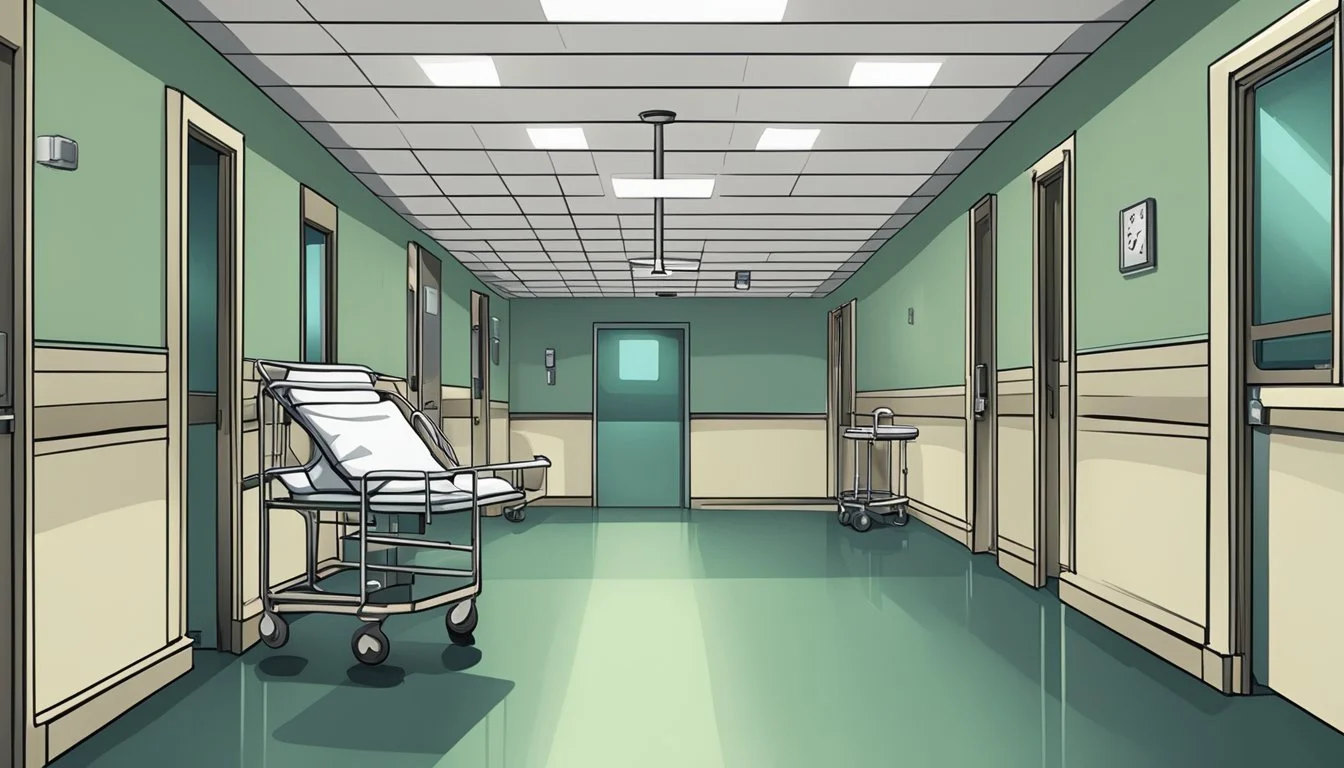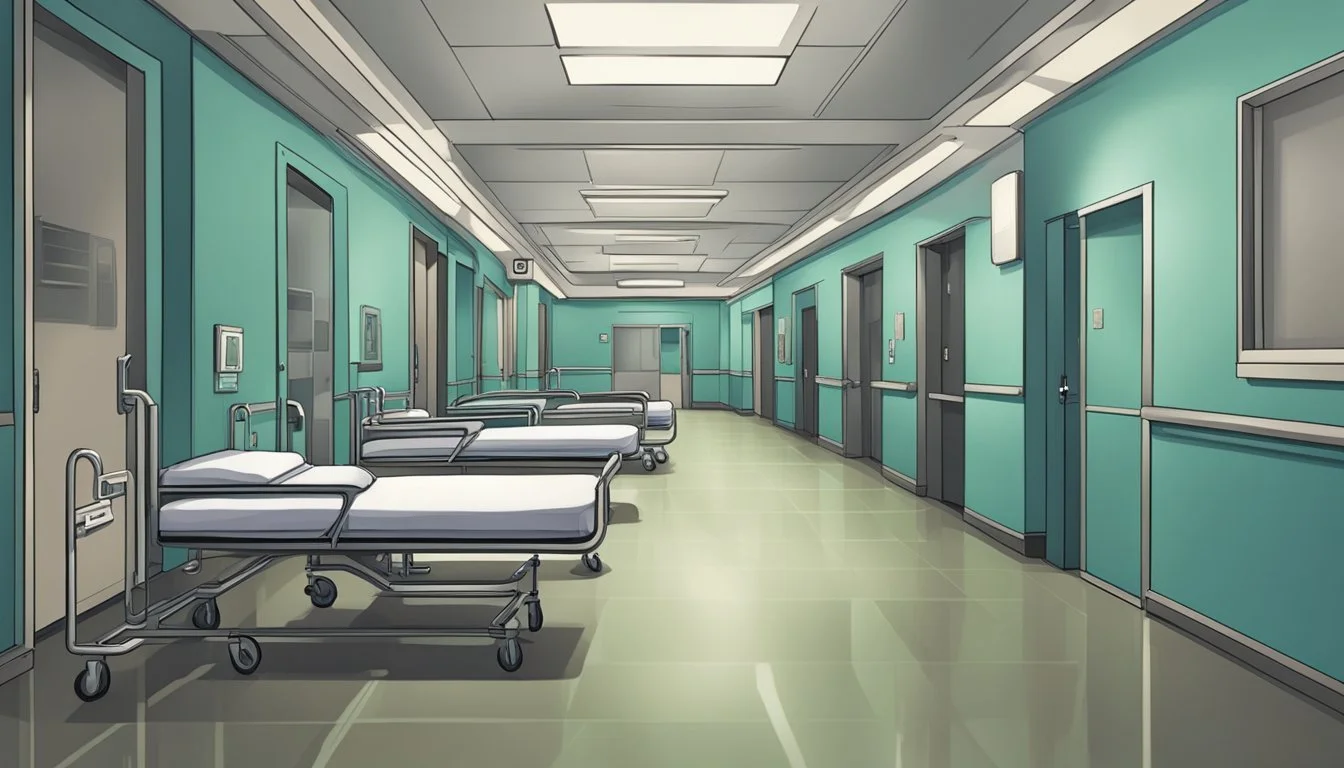Code Blue: Charles Cullen's Quiet Reign of Hospital Horror
Unmasking America's Deadliest Healthcare Serial Killer
Charles Cullen's 16-year nursing career left a trail of death and devastation across multiple hospitals in New Jersey and Pennsylvania. Suspected of killing hundreds of patients, Cullen exploited his position of trust to administer lethal doses of medication to unsuspecting victims. His reign of terror went unchecked for years due to inadequate oversight and a culture of silence within the healthcare system.
The full extent of Cullen's crimes may never be known. He confessed to murdering up to 40 patients, but investigators believe the true number could be far higher. Cullen moved from hospital to hospital when suspicions arose, easily finding new employment despite his troubling history.
It took the courage of a fellow nurse to finally bring Cullen to justice. Her cooperation with law enforcement led to his arrest in 2003, ending one of the most prolific killing sprees in American healthcare history. Cullen's case exposed critical flaws in hospital hiring practices and patient safety protocols, prompting calls for reform across the medical industry.
The Making of a Serial Killer
Charles Cullen's transformation from nurse to serial killer unfolded over decades. His troubled past, career choices, and pattern of patient deaths reveal a complex portrait of a man who exploited his position to take lives.
Early Life and Entry into Nursing
Charles Cullen was born in West Orange, New Jersey, in 1960. He experienced tragedy early, losing his father at just seven months old. His mother died in a car accident when he was 17, deepening his emotional struggles.
Cullen joined the U.S. Navy in 1978, serving as a petty officer on a submarine team. After his discharge in 1984, he enrolled in nursing school at Mountainside Hospital School of Nursing.
He graduated in 1986 and began his nursing career. Colleagues described him as quiet and hardworking, giving little indication of the darkness that lay beneath.
Cullen's Career in Hospitals
Cullen's 16-year nursing career spanned nine hospitals across New Jersey and Pennsylvania. He often worked in intensive care units, where he had access to powerful medications.
His employment history was marked by frequent job changes:
1988-1992: St. Barnabas Medical Center
1992-1996: Warren Hospital
1996-1998: Hunterdon Medical Center
1998-2000: Morristown Memorial Hospital
2000-2002: Liberty Nursing and Rehabilitation Center
2002-2003: Somerset Medical Center
Despite concerns raised at various hospitals, Cullen managed to continue finding work due to staffing shortages and lack of communication between institutions.
Patterns of Patient Deaths
Cullen's method of killing involved administering lethal doses of medications, particularly insulin and digoxin. He often targeted patients who were seriously ill or elderly.
Key aspects of Cullen's killing pattern:
Medication access: Used his position to obtain drugs easily
Timing: Often struck during night shifts when supervision was minimal
Patient selection: Chose vulnerable individuals less likely to raise suspicion
Frequency: Killings increased over time, becoming more frequent in later years
Investigations revealed suspicious spikes in patient deaths during Cullen's shifts. However, the full extent of his crimes remained hidden for years due to the difficulty in detecting deliberate medication overdoses.
Cullen's Reign of Terror
Charles Cullen's murderous spree spanned 16 years across multiple hospitals in New Jersey and Pennsylvania. He systematically killed patients using lethal doses of medications, leaving a trail of grief and devastation in his wake.
The Victims and Methodology
Cullen targeted vulnerable patients in critical care units. He selected victims seemingly at random, regardless of age or condition. His method involved administering unauthorized medications through intravenous lines.
Cullen often worked night shifts, when supervision was minimal. He accessed patient records to identify those receiving certain drugs, then added lethal doses to their IVs.
Estimates suggest Cullen may have killed up to 400 patients, though he only admitted to 40 murders. His victims ranged from young adults to elderly patients.
Digoxin and Insulin: Weapons of Choice
Cullen primarily used two drugs to carry out his murders: digoxin and insulin. Digoxin, a heart medication, can be fatal in high doses. Insulin, when given unnecessarily, causes dangerous drops in blood sugar.
These medications were chosen for their availability in hospitals and the difficulty in detecting their misuse. Digoxin overdoses can mimic heart failure, while insulin overdoses may appear as natural complications.
Cullen's knowledge as a nurse allowed him to manipulate medication dosages without raising immediate suspicion. He exploited gaps in hospital drug tracking systems to obtain and administer these lethal doses.
The Impact on Families and Victims
The aftermath of Cullen's crimes left deep scars on families and communities. Many relatives of deceased patients were unaware their loved ones had been murdered until years later.
Families experienced renewed grief upon learning the truth. Some questioned medical decisions made during their relatives' care, leading to distrust in the healthcare system.
Survivors of Cullen's attempted murders faced physical and emotional trauma. Many required ongoing medical treatment and counseling to cope with their experiences.
The healthcare facilities where Cullen worked also suffered. Hospitals faced lawsuits, damaged reputations, and the task of rebuilding trust with patients and staff.
Investigation and Apprehension
The unraveling of Charles Cullen's deadly deeds involved multiple players and pivotal moments. Whistleblowers, law enforcement, and a crucial breakthrough led to the serial killer's arrest.
Whistleblowers and Co-workers
Amy Loughren, a co-worker at Somerset Medical Center, played a vital role in exposing Cullen's crimes. She noticed suspicious patterns in patient deaths and medication records. Loughren's friendship with Cullen provided unique insight into his behavior.
Other staff members had also raised concerns about Cullen's conduct. Some reported odd patient reactions after his shifts. Others noted his access to restricted medications.
Hospital administrators initially dismissed these reports. They feared potential lawsuits and damage to their reputation.
Law Enforcement and Evidence
Local police began investigating unusual deaths at Somerset Medical Center. They faced challenges in gathering concrete evidence. Hospital records were complex and often incomplete.
Detectives interviewed staff members and reviewed patient files. They struggled to connect Cullen directly to the deaths.
The breakthrough came when investigators partnered with Loughren. She provided crucial insider knowledge about hospital procedures and Cullen's habits.
Breakthrough and Arrest
Loughren agreed to wear a wire during conversations with Cullen. These recordings captured incriminating statements. Cullen unknowingly revealed details about his methods and victims.
Law enforcement used this evidence to build a solid case. They arrested Cullen on December 12, 2003, charging him with murder and attempted murder.
During interrogation, Cullen confessed to killing up to 40 patients. Investigators believe the actual number may be much higher.
His arrest ended a 16-year reign of terror across multiple hospitals. It also exposed serious flaws in healthcare hiring and oversight practices.
Trial and Societal Impact
Charles Cullen's arrest and subsequent trial shocked the medical community and public alike. His case exposed critical flaws in hospital hiring practices and patient safety protocols.
Media Coverage and Trial Proceedings
The Cullen case attracted intense media scrutiny. News outlets closely followed the trial proceedings, broadcasting details of his crimes to a horrified public. Cullen initially faced charges in New Jersey for the murder of patients at Somerset Medical Center.
As the trial unfolded, prosecutors presented evidence of his systematic killing spree across multiple hospitals. Former colleagues testified about suspicious incidents involving Cullen. Medical experts explained how he manipulated medication dosages to cause fatal cardiac arrests.
Cullen's defense team argued he suffered from mental illness, but this strategy ultimately failed to sway the court.
The Sentencing and Aftermath
In 2006, Cullen received 11 consecutive life terms for his crimes in New Jersey. He later pleaded guilty to additional murders in Pennsylvania, resulting in 6 more life sentences. The court spared him the death penalty in exchange for his cooperation in identifying victims.
Cullen's conviction brought a measure of closure to victims' families. Many expressed relief that he would never walk free again. His ex-wife divorced him during the legal proceedings, distancing herself and their children from his horrific legacy.
The sentencing marked the end of Cullen's reign of terror but left lingering questions about how he evaded detection for so long.
Cullen's Legacy and Hospital Policy Reform
Cullen's case sparked urgent calls for reform in healthcare institutions. Hospitals faced pressure to improve background checks and reference verification for new hires. Many facilities implemented stricter controls on medication access and enhanced monitoring of patient care.
New laws emerged requiring healthcare providers to report suspicious deaths and disciplinary actions against staff. Some states established centralized databases to track nurses' employment histories across institutions.
These reforms aimed to prevent future serial killers from exploiting systemic weaknesses in patient safety protocols. Cullen's crimes served as a stark reminder of the critical importance of vigilance and accountability in medical settings.
Cultural Representation
Charles Cullen's crimes shocked the medical community and captured public attention. His story highlights systemic failures in healthcare and the chilling potential for abuse of trust.
The Good Nurse: Book to Screen Adaptation
"The Good Nurse" book by Charles Graeber was adapted into a Netflix film in 2022. The movie stars Jessica Chastain as Amy Loughren and Eddie Redmayne as Charles Cullen. It focuses on Loughren's pivotal role in exposing Cullen's crimes.
The film portrays Cullen as a soft-spoken killer, eschewing sensationalism for a more nuanced depiction. It explores how he exploited flaws in hospital systems to continue his lethal activities undetected.
Redmayne's performance avoids the typical "angel of death" tropes often seen in media portrayals of serial killers. Instead, it emphasizes Cullen's outward normalcy, making his actions all the more unsettling.
The adaptation raises important questions about patient safety and institutional accountability in healthcare settings. It serves as a cautionary tale, prompting viewers to consider how such events could occur in trusted medical environments.
Understanding Medical Serial Killers
Medical serial killers exploit their positions of trust to harm patients. These individuals often display complex psychological profiles and may be driven by a misguided desire to end suffering.
Psychological Profile and Motives
Medical serial killers typically exhibit narcissistic and antisocial personality traits. They may seek power and control over life and death. Some are motivated by a desire for attention or recognition.
These killers often rationalize their actions as mercy killings. They may view themselves as alleviating patient suffering or "playing God."
Feelings of inadequacy or a need to prove themselves can drive their behavior. Some experience a rush or thrill from their crimes.
Many medical serial killers are adept at manipulation and deception. They can maintain a caring facade while committing heinous acts.
The 'Angel of Death' Phenomenon
The term "Angel of Death" refers to healthcare workers who deliberately harm or kill patients. These individuals often target vulnerable patients who are seriously ill or elderly.
They may use their medical knowledge to administer lethal doses of medication undetected. Some tamper with equipment or withhold necessary treatments.
Male nurses like Charles Cullen fit this profile. Cullen killed dozens of patients over 16 years at various hospitals.
Angels of Death can evade detection for years due to high patient mortality rates in healthcare settings. Their actions may be mistaken for natural deaths.
Hospitals must implement strict safeguards and reporting systems to prevent these killers from continuing their deadly sprees across multiple facilities.
Privacy and Data Protection in the Digital Era
The digital age has brought unprecedented challenges to personal privacy and data protection. Technological advancements have created new vulnerabilities for sensitive information, especially in healthcare settings.
Personal Data and Human Rights
Personal data is now recognized as a fundamental human right. Many countries have enacted laws to protect individuals' information from misuse or unauthorized access. The European Union's General Data Protection Regulation (GDPR) sets a global standard for data privacy.
Healthcare providers must comply with strict regulations when handling patient data. Electronic health records contain highly sensitive details that require robust safeguards. Hospitals and clinics use encryption, access controls, and audit trails to protect patient privacy.
Despite these measures, data breaches in healthcare remain a serious concern. Cybercriminals target medical records due to their high value on the black market.
The Role of Consent in Privacy
Informed consent is a cornerstone of data privacy. Patients must agree to how their personal information is collected, used, and shared. Healthcare organizations are required to obtain explicit consent before using patient data for research or marketing purposes.
Consent forms have become more detailed and transparent. They explain:
What data is being collected
How it will be used
Who will have access to it
How long it will be stored
Patients have the right to withdraw consent at any time. This empowers individuals to control their personal information.
Implications for Patient Privacy
The digital transformation of healthcare has significant implications for patient privacy. Electronic health records make it easier to share information between providers, improving care coordination. However, this also increases the risk of unauthorized access.
Telemedicine and health apps collect vast amounts of personal data. While these technologies offer convenience, they also raise privacy concerns. Patients must be cautious about sharing health information through digital platforms.
Healthcare organizations face the challenge of balancing data utility with privacy protection. They must implement strong security measures without hindering the flow of information necessary for patient care.
Preventing Future Crimes
The Charles Cullen case exposed critical flaws in hospital systems and nursing oversight. Addressing these vulnerabilities requires a multi-faceted approach focused on strengthening protocols, ethics training, and protecting those who report misconduct.
Improvements in Hospital Protocols
Hospitals have implemented stricter medication tracking systems to prevent unauthorized access. Digital records now log who accesses medications and in what quantities. Random audits of medication inventories are conducted regularly. Background checks for new hires have become more thorough, including contacting previous employers directly.
Saint Barnabas Medical Center and Warren Hospital enhanced their hiring processes after the Cullen case. They now require multiple interviews and more extensive reference checks for nursing candidates. Easton Hospital implemented a "two-nurse check" system for high-risk medications.
Many facilities have also instituted mandatory reporting of any suspicious behavior or unexplained patient deaths. This helps identify potential issues before they escalate.
Educational Measures and Nursing Ethics
Nursing programs have expanded their focus on ethics and patient safety. Courses now emphasize the duty to report concerns about colleagues' behavior. Case studies of healthcare serial killers are used to illustrate warning signs.
Continuing education requirements for nurses often include modules on ethical decision-making and patient advocacy. These programs stress the importance of speaking up when something seems wrong.
Hospitals like Saint Barnabas Medical Center now hold regular staff meetings to discuss ethical dilemmas and reinforce proper protocols. This open dialogue helps create a culture of accountability and patient safety.
The Importance of Whistleblower Protection
Strong whistleblower protection laws are crucial for encouraging staff to report suspicious behavior. New Jersey strengthened its Conscientious Employee Protection Act in response to the Cullen case.
Hospitals have established anonymous reporting hotlines for staff to voice concerns without fear of retaliation. Clear policies outline the steps for investigating reports and protecting the identity of whistleblowers.
Warren Hospital now includes information on whistleblower rights in new employee orientations. This ensures all staff understand their protections if they need to report misconduct.
Training programs teach managers how to properly handle and investigate reports of wrongdoing. This helps create a supportive environment for those who come forward with concerns.



